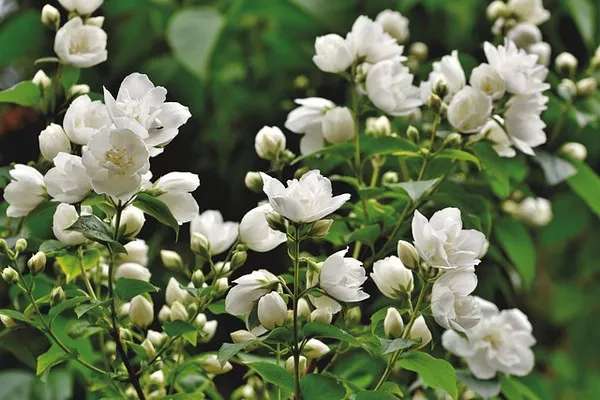Fresh flowers are nature’s delicate treasures that bring beauty, fragrance, and vitality into our lives. Whether they’re gifted to us or carefully selected from our gardens, preserving their vibrant appearance for as long as possible is a common desire. While flowers have a limited lifespan, there are several techniques and tips to help extend their freshness and keep them looking beautiful for an extended period. In this article, we’ll explore the art of preserving fresh flowers, providing you with essential knowledge and methods to make your floral arrangements last longer.
Selecting the Right Flowers
Preservation begins with selecting the right flowers. Some varieties naturally have a longer vase life than others. Here are a few options known for their durability:
Roses: Roses are renowned for their long-lasting qualities. When properly cared for, they can remain vibrant for up to two weeks.
Carnations: Carnations are hardy flowers that can last for several weeks. They come in a variety of colors, making them an excellent choice for various arrangements.
Chrysanthemums: Chrysanthemums, or mums, are known for their resilience. They can stay fresh for two to three weeks with proper care.
Alstroemerias: Also known as Peruvian lilies, alstroemerias are a fantastic choice for long-lasting bouquets. They can last up to three weeks or more.
Sunflowers: Sunflowers are not only cheerful but can also last for up to two weeks with good care.
These flowers provide a great starting point for your floral arrangements if you want them to last longer.
Properly Harvesting Flowers
To maximize the longevity of your fresh flowers, proper harvesting is essential. Here are some tips for harvesting flowers:
Choose the right time: Harvest flowers early in the morning or late in the evening when the weather is cooler. Avoid picking them during the hottest part of the day.
Use sharp, clean tools: Use sharp scissors or pruning shears to make clean cuts. Dull or dirty tools can damage the stems and reduce vase life.
Cut at an angle: When cutting stems, make a slanted cut to increase the surface area for water absorption.
Remove excess foliage: Trim away any leaves or foliage that would be submerged in water. This prevents bacterial growth in the vase.
Properly Conditioning Flowers
Conditioning flowers is the process of preparing them for their vase life. Follow these steps for proper conditioning:
Fill a clean vase with fresh water: Use clean, lukewarm water and fill the vase to about two-thirds full.
Add flower food: Flower food contains essential nutrients and bactericides to keep the water clean and flowers nourished. Follow the instructions on the package for the right dosage.
Remove leaves below the waterline: Strip any leaves that would be submerged in water to prevent bacterial growth.
Recut the stems: Before placing the flowers in the vase, recut the stems at a slanted angle under running water. This ensures they can take up water efficiently.
Allow for space: Arrange the flowers loosely in the vase to allow for good air circulation, which reduces the risk of mold and bacterial growth.
Proper Care and Maintenance
Once your fresh flowers are arranged in a vase, proper care and maintenance are crucial for prolonging their lifespan:
Change the water: Every 2-3 days, replace the water in the vase with fresh, lukewarm water. Be sure to add flower food each time.
Trim the stems: Recut the stems at an angle every time you change the water. This helps maintain a clean surface for water absorption.
Keep them cool: Place the vase in a cool location, away from direct sunlight, drafts, and heat sources. Cooler temperatures slow down the aging process.
Avoid ethylene exposure: Ethylene gas, produced by fruits and some vegetables, can speed up the wilting of flowers. Keep your vase away from these sources.
Remove spent blooms: As flowers start to fade, remove them from the arrangement to encourage the remaining blooms to thrive.
Drying and Preserving Flowers
If you want to preserve your flowers for an extended period or create lasting memories, consider drying or pressing them. Here are two popular methods for preserving flowers:
Air Drying:
- a. Gather the flowers you want to dry.
- b. Remove any excess foliage.
- c. Group the flowers into small bundles and secure them with a rubber band.
- d. Hang the bundles upside down in a dark, dry, and well-ventilated area.
- e. Allow them to air dry for 1-3 weeks until completely dry.
- f. Once dried, you can use them in various crafts or display them in shadow boxes.
Pressing Flowers:
- a. Place the flowers between sheets of blotting paper or absorbent paper, leaving space between each flower.
- b. Place heavy books or flower presses on top to apply pressure.
- c. Leave them to press for 2-4 weeks until they are fully dried and flat.
- d. Pressed flowers can be used for scrapbooking, card making, or framed art.
Conclusion
Preserving fresh flowers is an art that combines the right selection, harvesting, conditioning, and care techniques. By following these steps and methods, you can extend the lifespan of your blooms and enjoy their beauty for longer periods. Whether you’re arranging them in vases or preserving them through drying or pressing, the efforts you invest in preserving fresh flowers will undoubtedly bring joy and beauty to your life.


